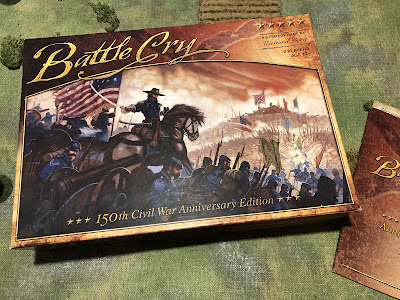During this past week, I have resumed playing some English Civil War (ECW) games for to two reasons. Firstly, my interest in the period was reignited after reading "Pike and Shot Tactics 1590-1660" by Keith Roberts (refer to an earlier post for my takeaways from this book). Secondly, I am experiencing issues with my left hip which means I need to avoid sitting down too much, but standing at my wargaming table doesn't put any strain on my hip, funny that, and is the one and only upside of this situation.
 |
| The ECW units see the light of day. These are Hinchliffe models some 50 years old and repainted. |
The constraints placed upon the ECW commander with deployment of their armies and the difficulty of manoeuvre of those armies on the battlefield, has got me thinking about the suitability for solo gaming of this period and whether or not I could construct some decision tables to direct the opposing army in a wargame?
The rest of this post and some following posts will provide more details of my progress, and the pitfalls I encounter, as I work through this. Any comments and advice are most welcome.
However, prior to starting to create the decision trees, I had to modify the rules of the "D3 ECW" game (see tab at top of blog). I opted to use an I Go, You Go, approach as it seems more suitable for utilising decision tables, since the decisions will mainly involve movement such as charges, while shooting is directed at the nearest enemy, and melee automatically takes place between engaged units. Additionally, I reduced the number of infantry and cavalry units to between 5 and 6, along with a few smaller dragoon and artillery units which are eliminated with half the hits of larger infantry and cavalry units. This was to simplify and reduce choices. Finally, I limited the number of units permitted to move to the score of a D3 dice. As I continue with these posts, I will provide the updated rules.
 |
| A test game underway |
In the process of developing the decision tables, the top level table operates at the army level and establishes whether the army is in an attacking, holding, or retiring position. Once this status is determined, the corresponding decision table for the army's status is used to determine the actions to be taken on the tabletop.
 |
| The army level decision table determines which corresponding decision table is used to move troops on the tabletop. |
To help in the creation of the second set of decision tables, I have been playing a number of ECW games and noting down my decisions (hopefully the right ones). While taking notes, I discovered that I had more of a prioritised list of actions rather than a decision tree, and these actions quite naturally followed the game's sequence of play. The priorities on each list varied depending on the army's status. Although there are no dice rolls involved in choosing between actions, it may appear somewhat mechanical. However, the variability lies in the number of move actions taken, which is determined by a D3 dice roll.
 |
| I am using filing cards to make notes. One card for each decision table (or priority list). |
Example of Army Level Decision Table
Here are details of the decision table for army level status as they currently stand. There are sure to be updates, but it is a starting point.
















































